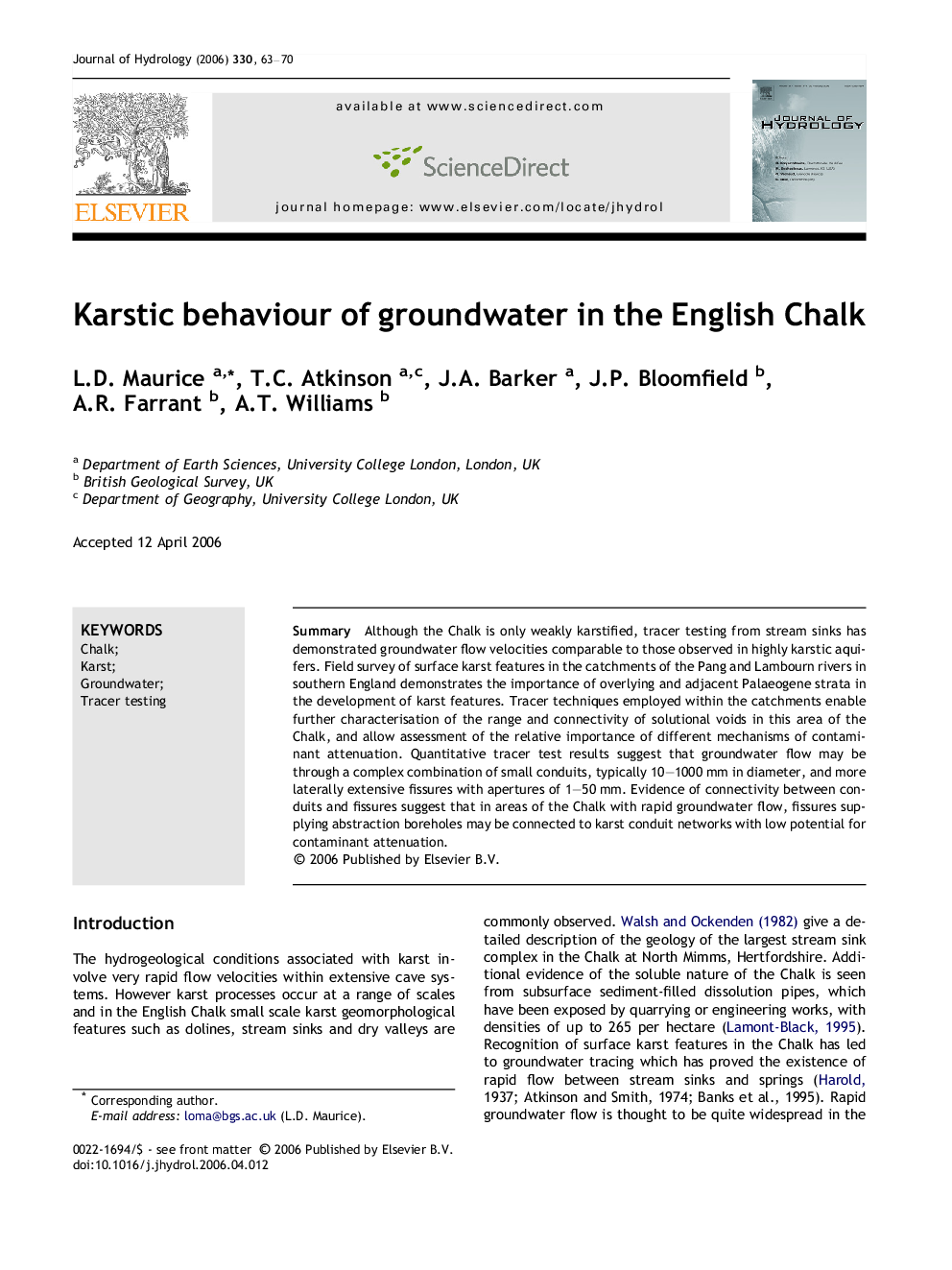| Article ID | Journal | Published Year | Pages | File Type |
|---|---|---|---|---|
| 4580524 | Journal of Hydrology | 2006 | 8 Pages |
SummaryAlthough the Chalk is only weakly karstified, tracer testing from stream sinks has demonstrated groundwater flow velocities comparable to those observed in highly karstic aquifers. Field survey of surface karst features in the catchments of the Pang and Lambourn rivers in southern England demonstrates the importance of overlying and adjacent Palaeogene strata in the development of karst features. Tracer techniques employed within the catchments enable further characterisation of the range and connectivity of solutional voids in this area of the Chalk, and allow assessment of the relative importance of different mechanisms of contaminant attenuation. Quantitative tracer test results suggest that groundwater flow may be through a complex combination of small conduits, typically 10–1000 mm in diameter, and more laterally extensive fissures with apertures of 1–50 mm. Evidence of connectivity between conduits and fissures suggest that in areas of the Chalk with rapid groundwater flow, fissures supplying abstraction boreholes may be connected to karst conduit networks with low potential for contaminant attenuation.
